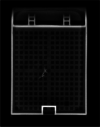Barium Sulfate Deposition in the Gastrointestinal Tract: Review of the literature
- PMID: 36585714
- PMCID: PMC9805050
- DOI: 10.1186/s13000-022-01283-8
Barium Sulfate Deposition in the Gastrointestinal Tract: Review of the literature
Abstract
Background: Barium sulfate is utilized for imaging of the gastrointestinal tract and is usually not deposited within the wall of the intestine. It is thought that mucosal injury may allow barium sulfate to traverse the mucosa, and allow deposition to occur uncommonly. Most pathology textbooks describe the typical barium sulfate deposition pattern as small granular accumulation in macrophages, and do not describe the presence of larger rhomboid crystals. This review will summarize the clinical background, radiographic, gross, and microscopic features of barium sulfate deposition in the gastrointestinal tract. A review of the PubMed database was performed to identify all published cases of barium sulfate deposition in the gastrointestinal tract that have been confirmed by pathologic examination.
Conclusions: A review of the literature shows that the most common barium sulfate deposition pattern in the gastrointestinal tract is finely granular deposition (30 previously described cases), and less commonly large rhomboid crystals are seen (19 cases) with or without finely granular deposition. The fine granules are typically located in macrophages, while rhomboid crystals are usually extracellular. There are various methods to support that the foreign material is indeed barium sulfate, however, only a minority of studies perform ancillary testing. Scanning electron microscopy with energy dispersive X-ray spectroscopy (SEM/EDS) can be useful for definitive confirmation. This review emphasizes the importance of recognizing both patterns of barium sulfate deposition, and the histologic differential diagnosis.
Keywords: Barium sulfate; Granular and rhomboid deposition.
© 2022. The Author(s).
Conflict of interest statement
The authors declare that they have no competing interests.
Figures









References
-
- American College of Radiology. ACR–SPR practice parameter for the performance of contrast esophagrams and upper gastrointestinal examinations in infants and children. Accessed July 22 2022 2020.
-
- Botwe BO, Mensah YB, Kekesi K, Anim DA, Akpanu E, Vedenku R, et al. Fluoroscopic technique used to diagnose missed H-type tracheo-oesophageal fistula: Case report. World J Med Med Sci Res. 2014;2:118–122.
Publication types
MeSH terms
Substances
LinkOut - more resources
Full Text Sources

